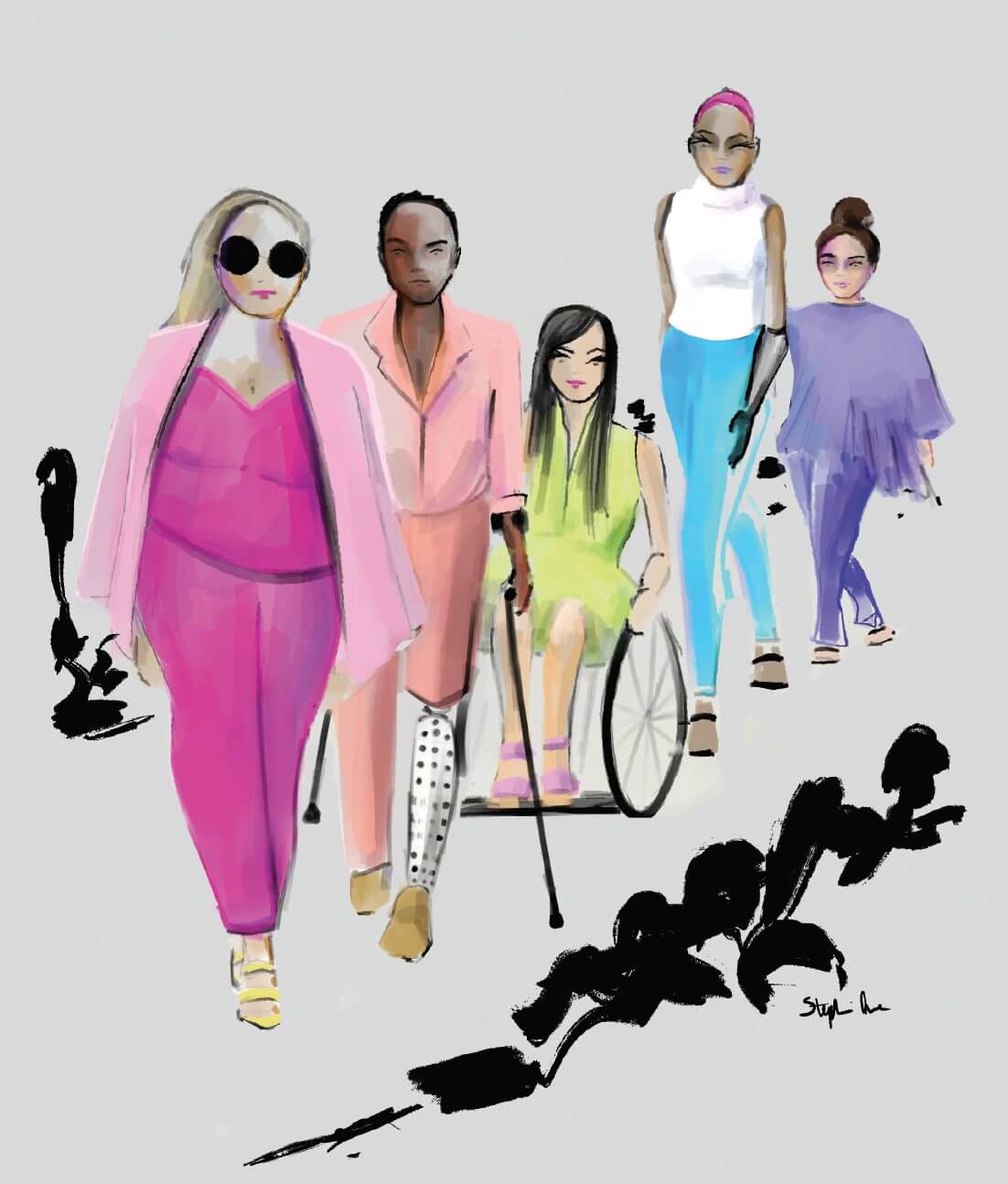In 2016, it was reported that the clothing manufacturing industry in Canada was worth $24.95 billion(U.S.), and although stats have not yet been released on what the industry has made to date, it has been forecasted to increase to $30 billion by 2020. Even with the steady increase in revenue in the industry and call-outs for more inclusivity to all facets of the business, fashion education programs throughout Canada have largely remained untouched.
Inclusivity in Education
In 2018, Ben Barry had just been appointed to become the incoming Chair and Associate Professor of Equity, Diversity, and Inclusion at the Ryerson School of Fashion, located in Toronto. In an interview with the Toronto Starhe explained how, prior to being appointed, he told the Ryerson search committee that he hoped to revolutionize not only their fashion education program, but the industry and the world.
Fast forward to 2020, and Ryerson is in the midst of rolling out their new mandate that cultivates inclusion, equity, and decolonization in the field of Fashion Studies that helps students enrolled in their fashion programs. Barry hopes that by showcasing to students the marginalization and barriers some face in fashion, in the classrooms at Ryerson, they will be able to help shape and introduce new fashion norms by facilitating more learning experiences and discussion.
In 2016, Nayyara Chue, a fashion design student at Parsons School of Design in New York City, petitioned to the school that she would be unable to finish her collection, as they didn’t have plus-size mannequins.
Alysia Myette, contract lecturer at the Ryerson School of Fashion shares, “Students, especially now, have their finger on the pulse of social movements … and they’re just so much more vocal about the changes that they want to see happen … they’re using their voices in a really proactive way.”
Plus Size Fashion
Hilary MacMillan, owner and designer of her namesake line, graduated from Blanche Macdonald in Vancouver in 2009, a creative arts college focused on hair, makeup, and fashion design. MacMillan became interested in designing for plus-size individuals, and introduced plus-sizes to her spring 2020 collection. Prior to its launch, she spent a considerable amount of time on research and development, since she had no formal training in school. She chatted with individuals who regularly purchased plus-size clothing, and also purchased garments to deconstruct, so she could examine how to construct patterns for differently shaped plus-size bodies all on her own. “I just tried to gain as much information as I could to figure out what was the best path for [our brand]. A lot of people think that it is just sizing things larger and that’s it. But there is a nuance to it,” MacMillan explains.
Adaptive Fashion
Similarly, Izzy Camilleri, the owner and designer behind IZ Adaptive, started designing ready-to-wear items professionally in 1984. During her time in school, Camilleri was taught the basics, which she explains gave her the tools to do whatever she wanted with her lines. It wasn’t until 2005, when Camilleri was approached by a wheelchair user to create custom pieces, that she became aware of the challenges of creating adaptive clothing. She says, “I didn’t realize what it actually took to get dressed and how limited her options were around clothing. So it was through that work I opened my eyes to a very big problem.”
Changes To Implement
Sternberg has a point: with a lack of accessible information available to students throughout Canada, at what point does the industry influence the education system? She further adds, “If we’re demanding that we want size inclusivity and we want more sustainable options for fabrics, fashion schools and the industry need to create more information and lessons on that because there’s a demand for it. We can blame the brands, we can blame the customer, we can blame the educational system, but somebody at some point has to make the choice to say ‘screw it and we’re going to go for it.’”
While the system won’t change overnight, plenty of schools are slowly starting to implement the basic groundwork of diversity and inclusion into their programming, with Ryerson University leading the way in Canada. Right now, it’s time for these conversations to both enter and hopefully evolve continuously in the classroom. Myette says, “You really don’t know where the fashion industry is going to take you and learning to work with different bodies, learning to work with different personas, learning different facets of the industry and how you can play a role in different facets of the industry just gives you so much more of a well-rounded experience to enter the fashion industry, as opposed to just having a very narrow idea of what you’re going to do and closing all those other doors that could have otherwise been open.”
SOURCE: This Magazine

